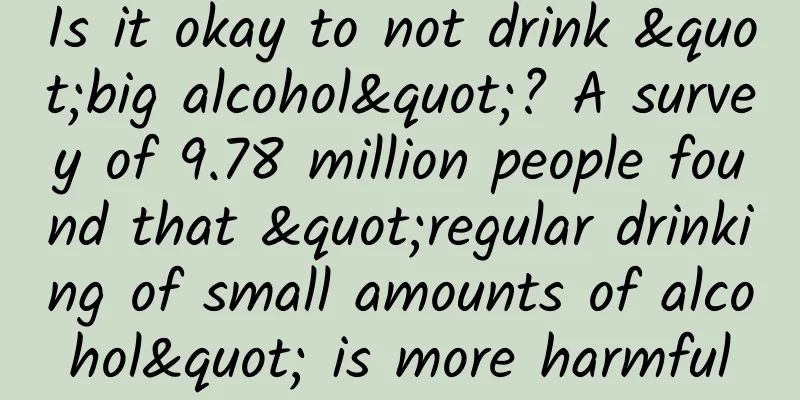The highest level of WHO alert! To deal with monkeypox, we need to clarify these issues

|
The World Health Organization announced on the 23rd that the monkeypox outbreak in many countries and regions constitutes an "international public health emergency", which is the highest level of alert issued by the WHO . To date, more than 16,000 cases of monkeypox have been reported to WHO from 75 countries and regions . What does the WHO's conclusion mean? Should we be worried about this, as China has not yet been affected by the monkeypox epidemic? Will it affect our lives in the future? Let's clarify it for you all at once. 1 What is “Public Health Emergency of International Concern” After the SARS epidemic in 2003, feeling that countries around the world need to respond together in certain major public health events, the World Health Organization revised the International Health Regulations in 2005 and proposed the concept of PHEIC (Public Health Emergencies of International Concern). A PHEIC is defined as a public health event that is severe, sudden, and unusual, spreads between countries, poses a public health risk to other countries, and may require a coordinated national response. PHEIC can be seen as the WHO issuing the highest level of alert, calling for strengthened international cooperation and joint response. Including this time, WHO has declared PHEIC a total of 7 times.
2 What is monkeypox? Monkeypox is a rare zoonosis . The culprit is the monkeypox virus, which belongs to the genus Orthopoxvirus of the subfamily Chordatapoxvirinae under the family Poxviridae. The names of viruses in the same genus are often related to the infected animals, such as rabbitpox, buffalopox, camelpox... and many viruses in the same subfamily are also named in this style, such as fowlpox, swinepox, goatpox... Monkeypox virus | ImageChong Creative Symptoms of monkeypox infection include rash, blisters that develop into pustules, fever, fatigue, muscle pain, etc. Monkeypox is a self-limiting disease, which means that as long as there are no serious complications, it will heal on its own even if only symptomatic treatment or no treatment is given, but a few people may have a serious illness and die from collapse or exhaustion. Human monkeypox: an emerging zoonotic disease doi:10.2217/17460913.2.1.17 Moreover, the mortality rate of monkeypox is not low. Depending on the strain and the specific condition of the patient, the mortality rate is about 1%-10%, which is especially dangerous for children . 3 How is monkeypox spread? When we mention monkeypox, we will think that monkeys are the main transmitters of the virus, so this name is given, but in fact monkeys are a bit innocent... The monkeypox virus can indeed be transmitted to humans through many animals (including monkeys), but it is generally believed that rodents are the main transmitters of monkeypox, and monkeys just unfortunately bear the blame . The monkeypox virus is transmitted to humans in many cases due to contact with wild animals carrying the virus. Previous cases of cross-border transmission were often related to animal transportation . This actually reminds us that we should protect the environment and avoid contact with wild animals. Monkeypox transmission is related to rodents | Tuchong Creative Similar to many other infectious diseases caused by viruses, monkeypox virus also needs to rely on animal blood, body fluids and secretions to spread through the respiratory tract, digestive tract and contact . Rodents carrying monkeypox virus, other infected animals and monkeypox patients can all cause transmission. According to a UN report, a large proportion of the recent monkeypox outbreaks have occurred in gay, bisexual and other men who have sex with men. Many people may therefore believe that monkeypox is a sexually transmitted disease and blame the spread of the disease on these sexual minorities. In fact, the reason why this happened was that a group of sexual minorities happened to attend the same party. Monkeypox can be transmitted in many ways, and droplets and objects that patients have touched can spread the monkeypox virus. Therefore, monkeypox is not a sexually transmitted disease and anyone can be infected. Monkeypox also has an incubation period of about 7-14 days. To be on the safe side, the UK stipulates that close contacts of monkeypox patients need to be quarantined for 21 days. 4 What is the relationship between smallpox and monkeypox? Does the smallpox vaccine protect against monkeypox? Smallpox virus and monkeypox virus are often mentioned together. They are indeed closely related, both belonging to the genus Orthopoxvirus. However, in terms of lethality, the two are very different. Diagram of smallpox virus and its symptoms | TuChong Creative As mentioned earlier, the mortality rate of monkeypox is currently between 1-10%, while that of smallpox can reach 30% , and the R0 of smallpox can reach 3, which means that without vaccination or protection, one smallpox patient can infect three people. Because of this, smallpox killed about 500 million people in the 100 years before it was completely eradicated by humans. Fortunately, people discovered methods to fight smallpox, such as human pox and cowpox, very early on, and finally developed a vaccine against smallpox. As a result, smallpox was defeated step by step, and by 1980, the World Health Organization announced that the smallpox virus had been completely eradicated worldwide. Therefore, after 1980, smallpox vaccinations were gradually stopped around the world. So what is the relationship between smallpox vaccine and monkeypox? It turns out that because the monkeypox virus is closely related to the smallpox virus, people who have been vaccinated with the smallpox vaccine can also be protected against the monkeypox virus. The current estimated protection rate is about 85%. Some researchers believe that the protection rate is not actually that high, but it still has a certain protective effect . 5 Monkeypox is coming, should we be worried? In China, researchers in related fields and disease control experts must of course be cautious, pay attention to the monkeypox epidemic situation, and conduct some research work to prepare for a rainy day. However, for ordinary people, there is no need to be nervous about this. Just be careful not to go to the epidemic area and maintain good hygiene habits . Why do I say so? First of all, the transmission efficiency of monkeypox is not high. According to experts' estimates, its R0 is about 1-2, and some experts believe that the R0 of monkeypox virus is even less than 1. In short, the infectiousness of monkeypox is completely not on the same order of magnitude as that of Omicron, and it is much easier to control. Secondly, as mentioned above, in my country, many people, especially the elderly, have received smallpox vaccines, which also provide considerable protection against monkeypox virus. Conventional disinfection methods can also deal with monkeypox virus, and it is not easy for it to cause any trouble in our current environment where we wear masks every day and wash our hands and disinfect frequently. Copyright image, no permission to reprint In addition, the monkeypox virus has been discovered for decades, and small-scale outbreaks have occurred one after another. This time, when the monkeypox outbreak occurred in Europe and the United States, there were early warnings, and the detection, diagnosis and treatment methods for the monkeypox virus are relatively mature, and we were not caught off guard like when the COVID-19 pandemic first started. Finally, the monkeypox virus is a double-stranded DNA virus, whose genetic material is relatively stable and less prone to mutation under natural conditions. Compared with the new coronavirus, which has new members popping up every few days, it can be said to be an "honest virus". Because of this, the development of its vaccine has fewer obstacles, and the effect will be better and longer-lasting. To sum up, although the monkeypox epidemic has spread in the community in Europe and the United States, people in China do not need to worry about it at present. They just need to avoid going to the epidemic areas and maintain good hygiene habits . Author | Ding Zong Review | Jin Dong, Associate Researcher, Institute of Infectious Disease Prevention and Control, Chinese Center for Disease Control and Prevention Source: Science Popularization China WeChat Official Account The cover image and the images in this article are from the copyright gallery. The image content is not authorized for reprinting. |
>>: Why does China need its own space station?
Recommend
Lin Yu_Course Creation Methodology Baidu Cloud Download
Lin Yu_Course Creation Methodology Lin Yu Course ...
How to apply the 80/20 rule in designing self-propagation and new sharing activities?
If you want to enhance the self-propagation abili...
Pinduoduo teaches three “secrets” to new media operations!
" Pinduoduo , Pinduoduo, the more you work, ...
iPhone 4 and first-generation iPad will not be eligible for iOS 8
There are many things that Apple is really good at...
When you run out of nail polish remover, can lemon juice really be used to remove nail polish? The truth is not that simple
Everyone loves beauty, and now "manicure&quo...
In order to win users, these live broadcast apps use very aggressive keywords
The user's mobile phone desktop is only an in...
How to use “product” thinking to guide event operations?
In order to stimulate consumption, major e-commer...
Souwaifuwei SEO training course 132 (Baidu network disk)
Tonight’s topic is “Project planning to achieve r...
Among the three major Japanese car companies, why was Nissan the first to transform, rather than Honda or Toyota?
As the global automotive industry faces unprecede...
Fourth in the world! He led the team to conquer chlortetracycline and broke the US monopoly
In January 1956, the CPC Central Committee decide...
The Forefront of Chinese Design——Web Design Trends in 2015 (Selected)
The turmoil in the web industry and China's r...
An inventory of the characteristics of major information flow channels such as Baidu and Tencent, save it now!
With the development of social media , Weibo, Ten...
Rural car purchase subsidy policy in 2022: How to apply? How much? Attached are car models for rural areas!
In the process of rapid social and economic develo...
Product promotion: How to advertise?
A very important part of advertising is the selec...
Pre-Qin ritual books are rediscovered! The “Tsinghua Bamboo Slips” are the first to discover such documents from the Warring States Period →
Recreating the original appearance of the ritual ...









